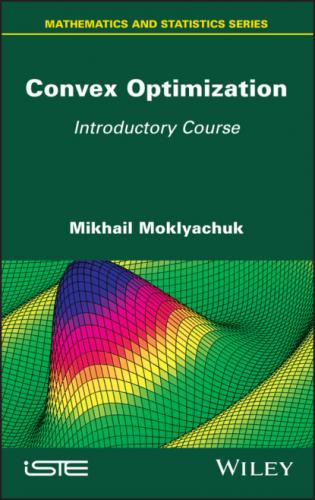holds true for all x ∈ (
If the function takes values in
Here are examples of semicontinuous functions:
1 1) the function y = [x] (integer part of x) is upper semicontinuous at the points of discontinuity;
2 2) the function y = {x} (fractional part of x) is lower semicontinuous at the points of discontinuity;
3 3) the Dirichlet function, which is equal to 0 at rational points and equal to 1 at irrational points, is lower semicontinuous at each rational point and upper semicontinuous at each irrational point;
4 4) if the function has a local minimum (maximum) at the point then it is lower (upper) semicontinuous at the point;
5 5) the function A for x ≠ 0, f(0) = +∞, is lower semicontinuous at the point 0. If we define the function at the point 0 arbitrarily, then it will remain lower semicontinuous.
THEOREM 1.1.– Let f and g be lower semicontinuous functions. Then:
– the function f + g is lower semicontinuous;
– the function αf is lower semicontinuous for α ≥ 0 and it is upper semicontinuous for α ≤ 0;
– the function f · g is lower semicontinuous for f ≥ 0, g ≥ 0;
– the function 1/f is upper semicontinuous if f > 0;
– the function max{f, g}, min{f, g} is lower semicontinuous;
– the functions sup{fi} (inf{fi}) are lower (upper) semicontinuous, if the functions fi are lower (upper) semicontinuous.
THEOREM 1.2.– (Weierstrass theorem) A lower (upper) semicontinuous on the interval [a, b] function f: ℝ → ℝ is bounded from below (from above) on [a, b] and attains the smallest (largest) value.
THEOREM 1.3.– (Fermat’s theorem) If
Fermat’s theorem gives the first-order necessary condition for existence of a local extremum of the function f(x) at point
THEOREM 1.4.– (Necessary conditions of the second order) If
THEOREM 1.5.– (Sufficient conditions of the second order) If the function f(x) has at a point
then
The necessary and sufficient conditions of the higher order of existence of an extremum of the function f(x) are given in the following theorems.
THEOREM 1.6.– (Necessary conditions of higher order) If
or
for some m ≥ 1, 2m ≤ n.
PROOF.– According to Taylor’s theorem, for a function which is n times differentiable at the point
If n = 1, then the assertion of the theorem is true as a result of Fermat’s theorem. Let n > 1, then
or
Let l be an odd number. Then the function
The function g(u) has a derivative at point u = 0. Since
Since
